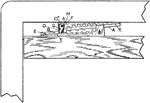Clipart tagged: ‘wedge’

Arch
"The blocks, which are technically known as voussoirs, should be of a wedge shape, the center or top…
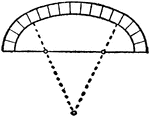
Center Arch
"Three center arches, employed in French Flamboyant." — The Encyclopedia Britannica, 1910

Center Arch
"Four center arches, employed in the Perpendicular and Tudor periods." — The Encyclopedia Britannica,…

Fastening Device
This fastening device provides a self-contained, tie-down unit by means of which load from a swivel…

Double Wedge
"Two wedges have been placed toward one another underneath the weight. Equal force is applied to each…

Elliptical Arch
"Upright elliptical arch, sometimes called the egg-shaped arch, employed in Egyptian and Sassanian architecture."…
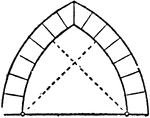
Equilateral Arch
"Equilateral pointed arches, described from two centers, the radius being the whole width of the arch."…
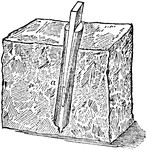
Feather and Tare
"Two pieces of metal placed in a hole in a stone which is to be split a wedge-shaped key or plug being…

Flat Arch
"Flat arch, where the soffit is horizontal and sometimes slightly cambered (dotted line)." — The…

Foiled Arch
"Pointed foiled arches, in the arcades of Beverley Minister and Netley Abbey." — The Encyclopedia…

Golf Clubs
"Golf clubs. 1, Driver; 2, brassie; 3, putter; 4, cleek; 5, iron; 6, niblick." -Foster, 1921
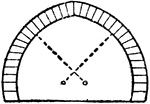
Horseshoe Arch
"Pointed horseshoe arches, found in the mosque of Tulun, Cairo, 9th century." — The Encyclopedia…
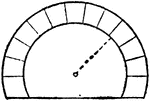
Horseshoe Arch
"Horseshoe arch, with the center above the springing; employed in Moorish architecture." — The Encyclopedia…

Simple Machine
A wedge is a moveable inclined plane that is used to move heavy materials short distances as shown in…

Multifoil Arch
"Multifoil cusped arch, invented by the Moors at Cordova in the 10th century." — The Encyclopedia…
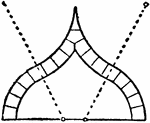
Ogee Arch
"Ogee arches, with curves of counter flexure, found in English Decorated and French Flamboyant." —…

Pile
"Argent, a pile, purpure. PILE. An angular figure like a wedge, formed by lines running from the dexter…
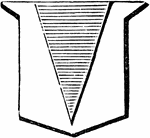
Pile Ordinary
"Argent, a pile, azure. The pile is formed like a wedge, and may be borne wavy, engrailed, &c.; it issues…
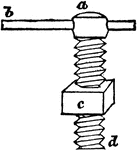
Screw
"The screw may be considered as a winding wedge; for it has the same relation to a straight wedge that…

Screw
"The screw is the sixth and last simple mechanical power. It may be consdered as a modification of the…
Screw
"Cylinder with a spiral of winding parallel ridges called Threads. If the Threads were unwound from…
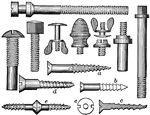
Collection of Screws Used in Carriage-Making and Carpentry
A number of screws, all used in carriage-making and carpentry. "A, B, C, D, and E are special forms…

Segmental Arch
"Segmental arch, where the center is below the springing." — The Encyclopedia Britannica, 1910

Semicircular Arch
"Semicircular arch, he center of which is in the same line with its springers." — The Encyclopedia…

Simple Machines
Illustrations showing the six mechanical powers: lever, wheel and axle, pulley, inclined plane, wedge,…

Splitting Wedge
"This wedge has the shape of two inclined planes. Its primary function is splitting or rending objects…
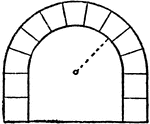
Stilted Arch
"Stilted arches, where the center is below the springing, but the sides are carried down vertically."…
Wedge
"The next simple mechanical power is the wedge. This instrument may be considered as two inclined planes,…

Wedge
"A wedge is a triangular prism of hard material, fitted to be driven between objects that are to be…
!["[A wedge] is simply a movable inclined plane, or two such planes united a their bases." -Avery 1895](https://etc.usf.edu/clipart/35900/35954/wedge2_35954_mth.gif)
Wedge Splitting Wood
"[A wedge] is simply a movable inclined plane, or two such planes united a their bases." -Avery 1895

Wedge
"The wedge is a movable inclined plane, and is used for moving a great weight a short distance. A common…

Inclined Plane Wedge
"This wedge is a movable inclined plane. Allows for raising great weights a short distance." —Quackenbos…

Wedge
An illustration of a wedge made of oak. A wedge is a tool used to separate two objects or portions of…

Wedge Axe
"The wedge axe (which was one of the first American improvements in edge tools introduced into Europe)."…




